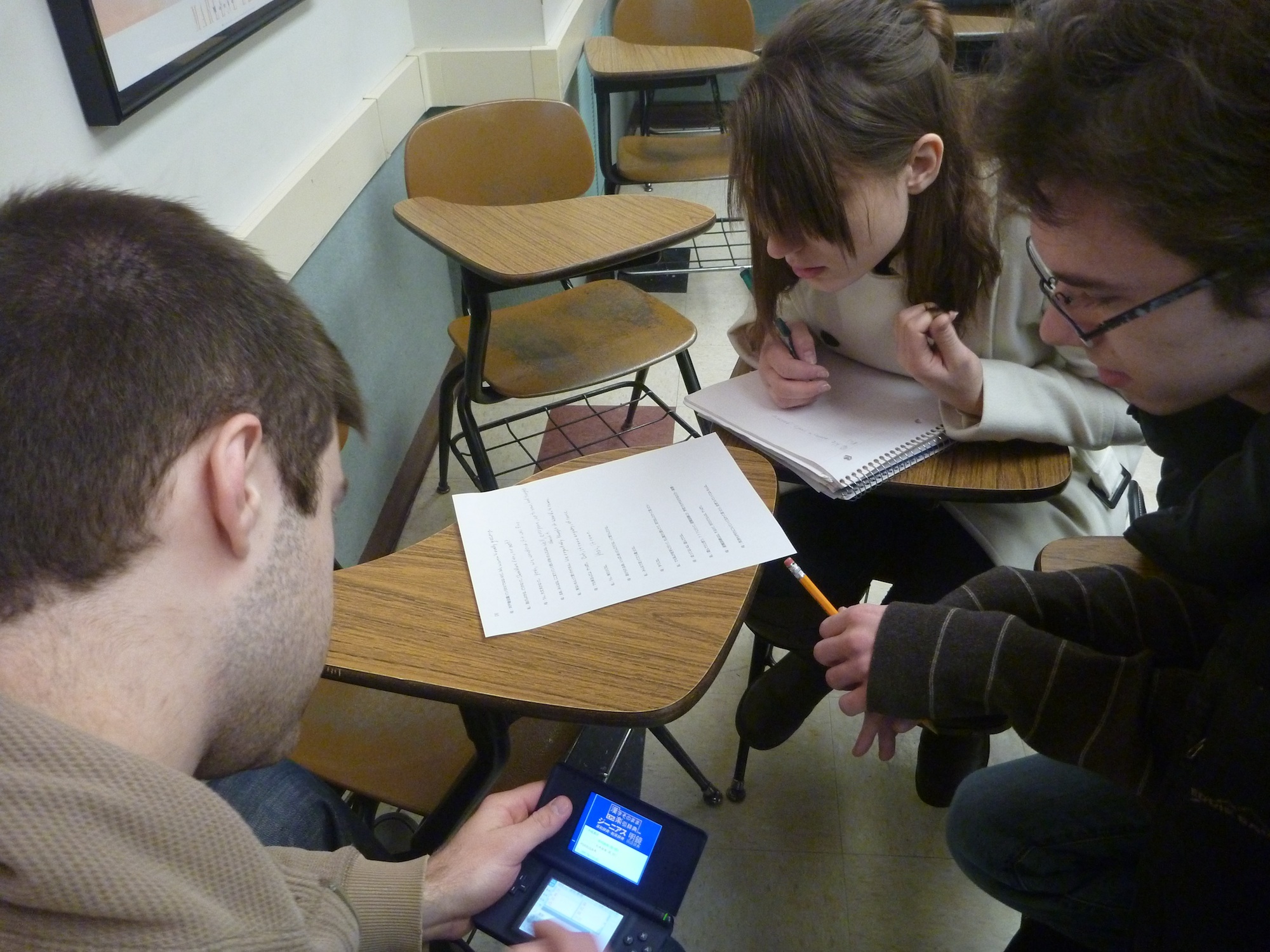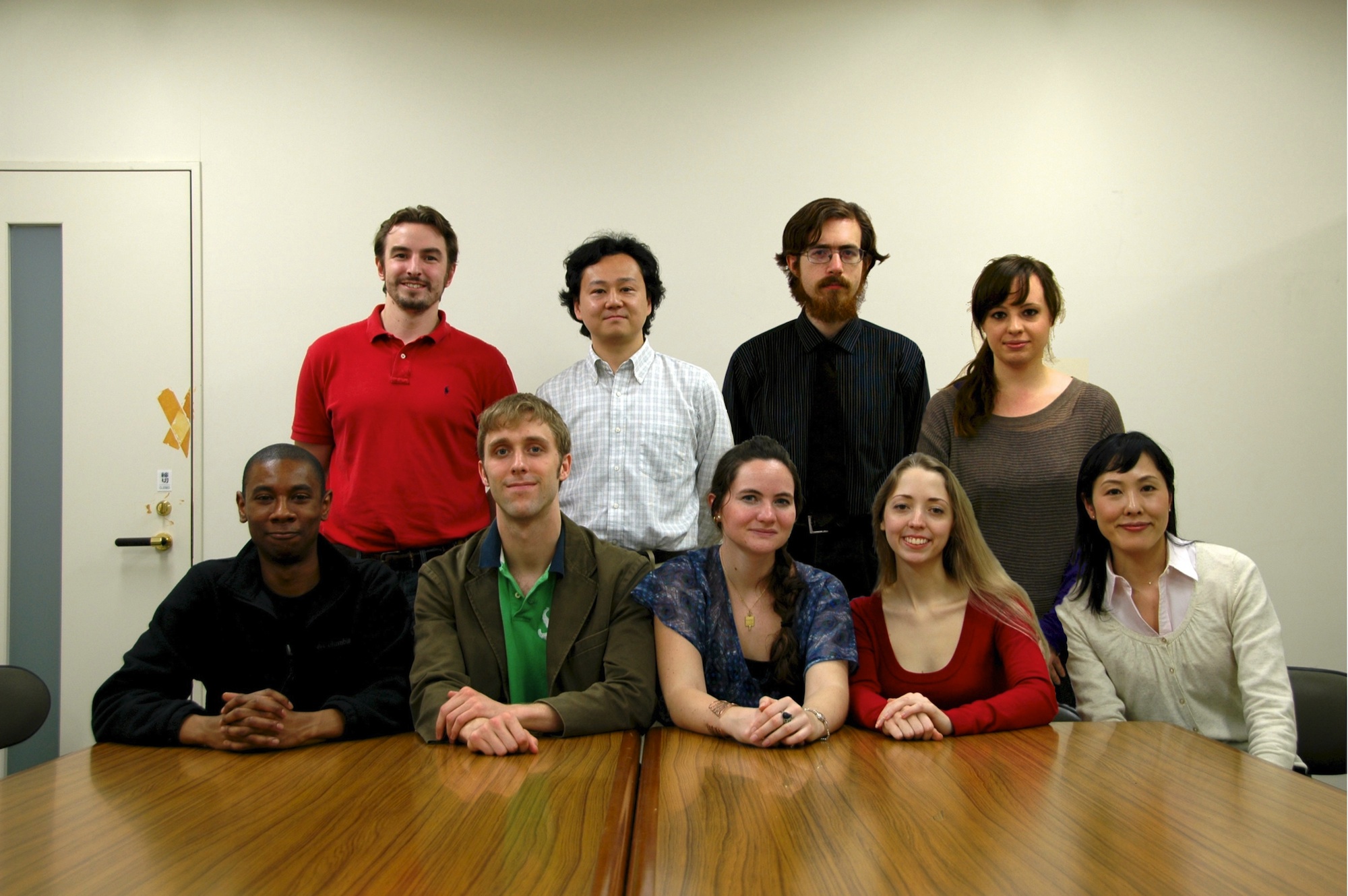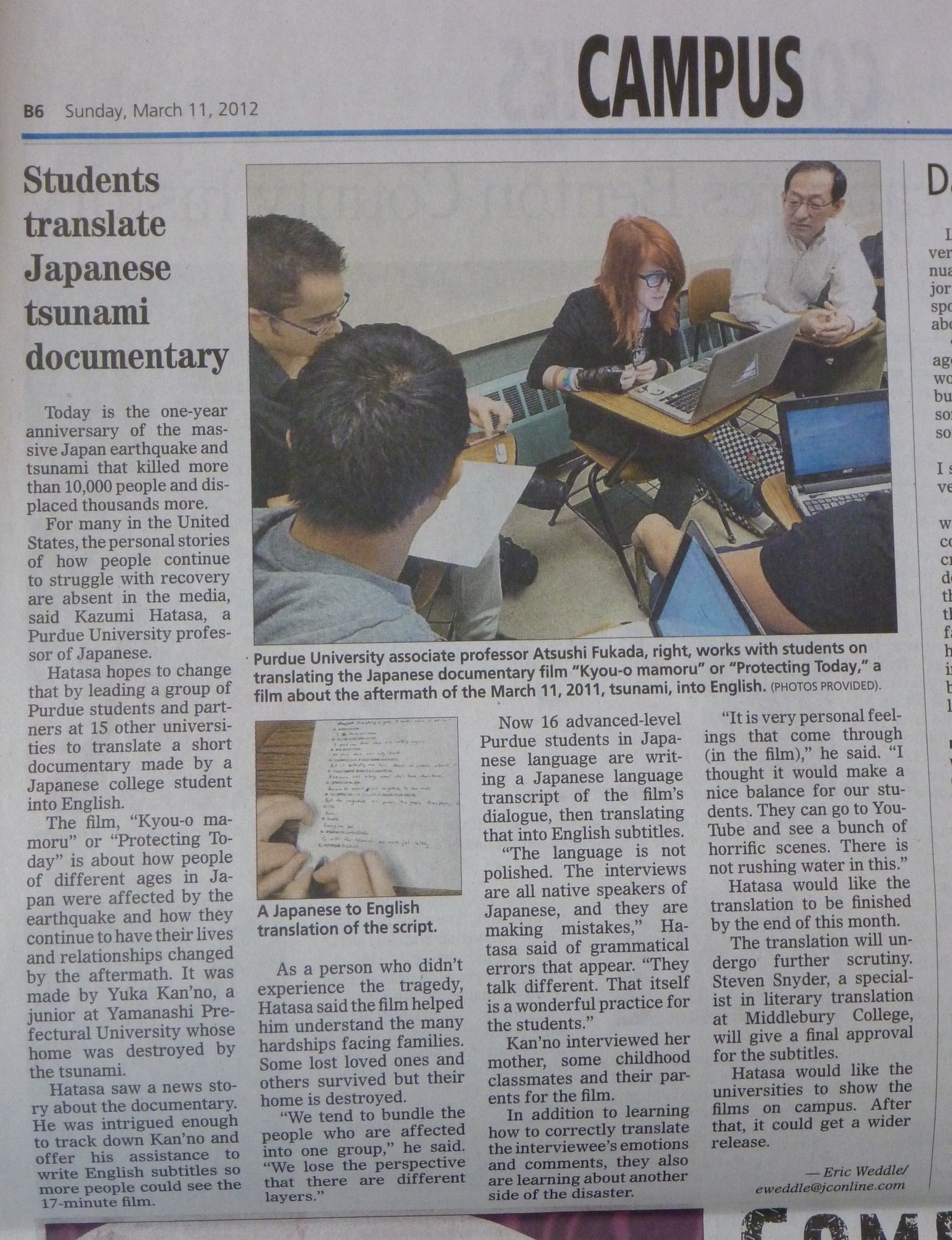
"Kyo-o mamoru" (Resilience - Protecting Today -) is now available as teaching materials. Those of you who are interested in using this documentary film for instructional purposes can use the following resources for free: original version without subtitles, original version with English subtitles, script in Japanese, sctript of the English subtitles. Possible uses are, but not limited to, exercise in extracting Japanese script, exercise in translation, discussion on the film, discussion on Great East Japan Earthquake and Tsunami. We only ask you to send us a brief report on the activities after you have conducted. If you are interested in these materials, please feel free to contact Kazumi Hatasa.
The subtitled version of "Kyo-o mamoru" (Resilience - Protecting Today -) is now distributed in either MP4 format or DVD (NTSC, not region coded). The running time is 70 minutes. Based on an agreement with the person in charge of screening in Japan, the screening fee of the subtitled version is set to $100. However, if your budeget situation is either tight or the size of the expected audience is small, donation of any amount will be acceptable. (You can send the donation after your screening.) The revenue will be used to cover the travel expense for Ms. Yuka Kanno to come to the United States. The dvd version plays on a regular DVD player. MP4 version will play on Windows Media Player, GOM Player, QuickTime Player, Real Player, and VLC. Once you finalize your plan for screening, please notify us. We will send the URL and password to download the MP4 version file (845 MB). Or, we will send a copy of DVD by US mail.
If you are interested in screening this documentary, have questions, or need further information, contact Kazumi Hatasa at khatasa@purdue.edu.
We have also made the following files available for your screening. Please feel free to use them.
1 pre-screening.pptx This power point file provide basic information about the earthquake and tsunami. Please down load rikuzentakata-311.mov to be used with this presentation. The video contains scenes shot on March 11 and March 12 in Rikuzentakata.
2 post-screening.mov This movie file contains a message from the director in English with slides. She shows her life before and after March 11.
3 Takata-2012.zip In this package, one page Word document shows a map of Rikuzentakata with many links to photographs and videos. They were all shot on May 25 and December 24 of 2012 by Kazumi Hatasa in Rikuzentakata.You can see the current condition of the scenery in the movie.
4 Poster files for screening used for Purdue:poster-kyo-o-mamoru-Japanese.pdf poster-kyo-o-mamoru-English.pdf
Where to send the screening fee or donations
Write a check to "Middlebury College."
Please provide the name of your organization which appears on the receipt.
Send your check to:
The Japanese school
Sunderland Language Center
14 Old Chapel Road
Middlebury College
Middlebury, Vermont 05753
If you need business-related information such as Tax ID# and W-9, please contact Wendy Butler (wbutler@middlebury.edu)
Journal and Courrier (local paper of Lafayette, IN) on the screening (2/25/2013)

NHK World News in English http://www3.nhk.or.jp/nhkworld/english/movie/feature201209121300.html
Yamanashi Nichinichi Newspaper August 17, 2012
News Plus Iwate (local TV station in Iwate)(Screening at Utah State University)
NHK News 7/23/2012 (This news story may give the viewers an incorrect impression that the subtitle project was done at Middlebury Japanese School. We have informed NHK to correct it.)
NHK BS1 WorldwaveTonight 7/12/2012(This news story may give the viewers an incorrect impression that the subtitle project was done at Middlebury Japanese School. We have informed NHK to correct it.)
Spontaneous choral performance at a surprise party for Yuka at Middlebury Japanese School in July, 2012
The objective of this project is to add English subtitles to a documentary film titled "Kyou-o mamoru (Protecting Today)" which depicts the lives of people who were affected by the Great East Japan Earthquake. The film was directed and produced by Ms. Yuka Kan'no, a junior at Yamanashi Prefectural University.
Ms. Yuka Kan'no is from Rikuzen-takata city in Iwate. Her home was destroyed by the tsunami on March 11, 2011. She also lost three friends who had been her classmates in junior high school. (Yuka was saved since she was in Yamanashi attending her university on that day.) Upon the suggestion of Professor Tetsuji Maezaawa, she decided to create a documentary film by interviewing people in her home town to record their lives after the earthquake. She interviewed her mother as well as some of her childhood classmates and their parents. The film turned out to be unique and very effective because Ms. Kan'no was able to bring out insights that only a person who shared the same experience could do.
"Protecting Today" was presented at the Yamanashi Film Festival in 2011. A news story about the film was aired on NHK in late November.。


NHK news
Professor Kazumi Hatasa happened to see the NHK news story in Indiana via NHK World Service. He became interested in adding subtitles to the film so that American students and the general public could understand it. He contacted Ms. Kan’no for permission to do this, and she granted it.
At first, the possibility of financial assistance from funding agencies such as the Japan Foundation was considered, but that would create an inevitable one-year delay. Since such a delay was undesirable, Professor Hatasa decided to break the film into smaller pieces and have advanced-level students in Japanese work collectively. This will give significant educational value to the process. Students will not only practice Japanese, but deepen their knowledge about the disaster and recovery efforts, and gain a valuable opportunity to think about what they can do to help those who are still in need.
In order to ensure the quality of the subtitles generated by students, Professor Hatasa has contacted Professor Steven Snyder of Middlebury College. Professor Snyder is a specialist in literary translation. He has translated novels by Japanese writers such as Natuo Kirino and Yoko Ogawa.
Professor Hatasa also consulted his colleague, Professor Atsushi Fukada who agreed to lend his technical skills in converting the film to AVI, segmenting it, and setting up Google Docs to share necessary documents. He has suggested the use of a subtitling program called Aegisub.
The current participants are students at Purdue University, Middlebury College, Inter-university Center for Japanese Studies, and Elizabethtown College, University of Notre Dame, Franklin & Marshall College, Washington & Lee University, Tufts University, Indiana University, University of Illinois at Urbana-Champaign, Carleton College, Utah State University, University of Virginia.
We are planning to finish the process by the end of March so that screenings can be held before the spring semester ends. We also hope to contact organizations including Japanese consulates, Japan societies, and Japanese chambers of commerce in USA for public showings.
If you are interested in particpating, feel free to contact Kazumi Hatasa.
Students in JPNS 402 at Purdue University(2012.1.25)






Students at Indiana University

Inter-University Center for Japanese Studies (Yokohama, Japan)

A news story on this project. February 2, 2012(YOMIURI ONLINE)
Indiana Daily Student (Indiana University) March 8, 2012
Stay Connected (Utah State University, College of Humanities and Social Sciences) March 9, 2012
Journal and Courier (Lafayatte, Indiana) March 11, 2012

Purdue University News release March 28, 2012